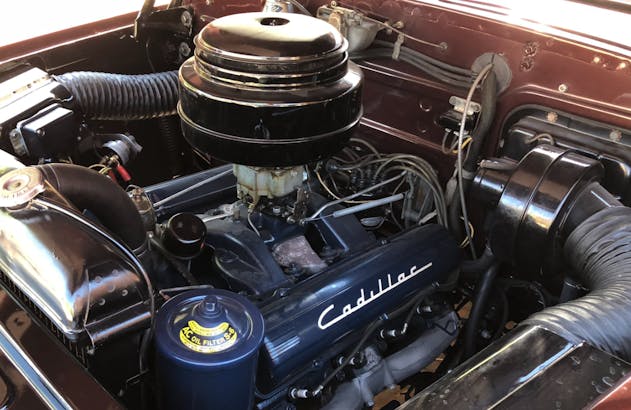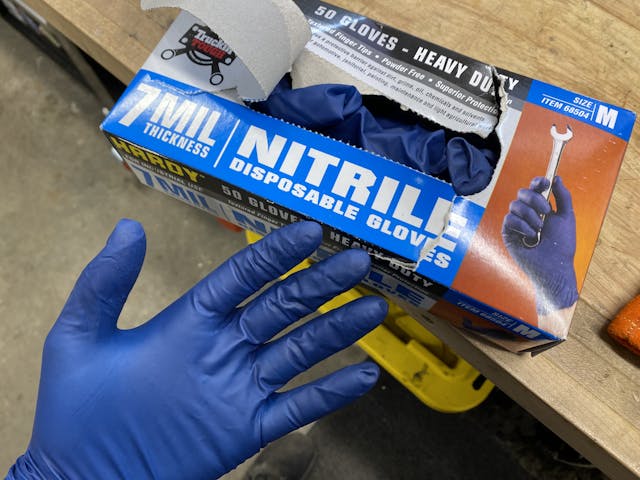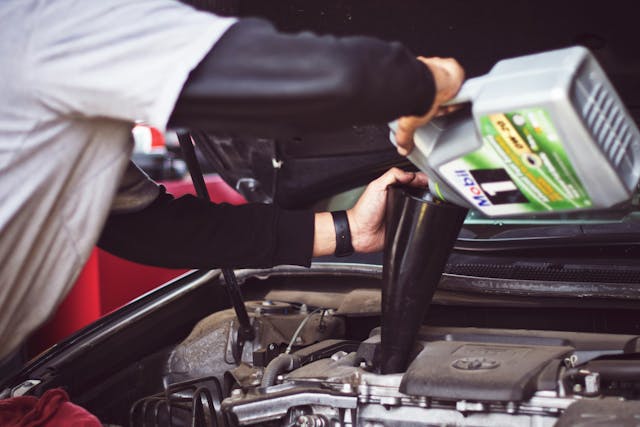8 oil change dos and don’ts
It’s a small job that somehow became a rite of passage for gearheads: Oil changes. The draining and refilling of engine oil is the first task that many budding wrench-turners undertake, and its certainly an important one. Like any other task in the automotive world, there are some pieces of institutional knowledge that comprise the key dos and don’ts for a smooth oil change. So let’s put these lessons learned out in the open, with the mission of shortening the process for newbies. And perhaps to reinforce some best practices for you veteran mechanics?
Don’t go crazy with warm-up

Modern oils are pretty amazing at suspending particles and contaminants, but there is still some junk that sinks down to the bottom of the pan. It needs to be stirred up to ensure it escapes when you pull the drain plug. Starting the engine and letting it idle for a minute or two is perfect for that final circulation. Run it any longer and you’re rewarded with nothing more than scalding hot oil that does nothing more than burn you. Before you pull that (drain) plug, give the engine a minute after shutting down, allowing the oil to drain to the pan from the nooks and crannies higher in the engine. But before you get underneath the vehicle to do the deed, remember you must…
Wear disposable gloves

Nitrile gloves keep you from soaking up solvents and oils into your skin. I’ve found 7mil thick to be a nice sweet spot of durable and affordable.
We all know the guy at the auto parts counter who has seriously gnarly hands from all the years being soaked in oil over decades of engine builds. That’s the visible damage. The invisible damage is sitting in your internal organs. All the hydrocarbons that get absorbed through the skin and are processed in our gut where they can’t be broken down. They end up accumulating in our body, which can cause serious health complications after years and years of chemical exposure. Preventing those issues is easy as putting on a pair of nitrile gloves. Use them even if it’s only for pulling the filter and drain plug, which you can do efficiently with…
The drain plug trick

It’s not groundbreaking, but nothing feels better than the perfect pull on a drain plug to ensure you don’t get any oil on your hand. The trick is pressure, not pulling. As you unthread the plug by hand, push in–against the bolt as in comes out–so the threads act as a seal with the outer edge. With a little practice you can get the pressure right (while not rocking the plug in the threads) and can spin the plug a full turn to feel for the “click.” That click means the bolt overlapped the last thread. With a swift motion away from the direction of oil flow, remove that now-loose plug. Presto! This can make thin viscosity oil changes much cleaner, and thick stuff like 20-50 can sometimes be spotless. In your excitement of not having a mess to clean up after draining, make sure you…
Don’t over tighten the drain plug or filter

It’s come to the point where stuck filters and stripped drain plugs are no longer a joke. Neither the filter nor plug require any real torque when installed properly. Use a small amount of oil to lube the filter’s rubber seal, then spin it into place. After the gasket seats on the housing, turn it only about three-quarter of an additional turn. Some applications might call for a full turn, but that is usually reserved for heavy duty equipment. Any tighter than what the filter manufacturers call for and you run the risk of deforming that rubber seal, which could cause oil to leak past the seal. That’s bad news. Any oil spillage is bad, so when you are filling…
Just use a funnel

The oil fill port on most engines is in that perfect spot where it looks like you could pour directly into it, except that’s a lie. They seem to be ideally located, but cleaning up if you miss (by even the smallest margin) can be a major pain. Are we really going to work so hard to spot and address leaks, to keep our engines clean, and just ruin it while doing routine maintenance?
I’m not. A funnel all but guarantees I won’t have to do any clean up after filling, even if I’m distracted or letting my 7 year-old niece do the filling. Putting in that fresh oil feels good, but be careful and…
Don’t overfill

This shows the rotating assembly without the oil pan and it’s easy to tell how oil at too high of a level would be bad.
Too much oil is just as bad as not enough. Seriously. The oil level in a wet-sump engine is carefully calculated to keep the rotating assembly from whipping through the oil. That action causes foaming, and oil foam pushed through the oiling system is the same as not having oil at all. I don’t need to tell you how bad that can be, so check the service or owners manual for the proper fill level. When done, look at the dipstick as a double check. Luckily, the empty oil containers you now have at this point are are perfect to…
Recycle your used oil

It’s never been easier to properly recycle used oil, so there is no excuse to do otherwise. Just about any auto parts store takes it, so they should be your first trip in your freshly serviced vehicle to “return” your oil. Be sure to capture oil in a non-contaminated pan so that the oil can actually be recycled. Coolant is the main enemy here, so be sure to flush your drain pan before the oil change. Luckily you don’t have to worry about how dusty or dirty the pan is, but other fluids can defeat the purpose of recycling. But before you make the trip to recycle the oil, be sure to…
Reset the computer (or write down your service date)

Modern cars have an oil life monitoring system. Whether you trust it is a personal preference, but for the sake of eliminating confusion, go ahead and reset it now. Most reset procedures involves cycling the ignition key and pressing the throttle pedal a certain number of times. The service manual will outline it, or a quick search to an online make/model specific forum will have the instructions. If your vehicles are of the manual variety, write down the oil change date in a log book. Or consider service tracker kept in the car or garage, as it keeps you from forgetting what’s been done. Not to mention thisa paper trail shows good stewardship to a potential next owner, which can mean an easier sale for more money.
In all, oil changes can be simple and rewarding for newbies and DIY enthusiasts alike. Following these best practices will not only keep your vehicle happy, but also make the experience better for you each time. Do you have something specific you add to this process? Let us know about it in the comments below.
***
Check out the Hagerty Media homepage so you don’t miss a single story, or better yet, bookmark it. To get our best stories delivered right to your inbox, subscribe to our newsletters.



Wow Kyle. You sure shook the bee’s nest on this one. Soooo many comments! I was going to comment but after scrolling down…….. I think everyones suggestions and blunders were listed. Hahahaha!
It’s a good thing too. There is lots of knowledge and tips in these comments!
just finished reading them all and my head is still buzzing from al those bees…why so many comments ? I believe because changing the oil is the first do it your self and also the most done to show appreciation and care of our car. How nice !
Regarding forgetting to add the new oil, I’ve seen the Quick Change oil places doing one of two things. They either have a protocol of having a second employee pull the dipstick as a check, or they pull the dipstick and walk to the window where the customers wait and show them the oil is full.
Our GLC 300 has no dipstick and it takes several minutes for the electronic oil level indicator to do its thing. Great invention. Maybe inspired by the WW II workers in the captured Citroen factory commandeered by the Germans to build vehicles. Some clever partisans figured a way to mark the dip sticks too low so the engines failed due to too little oil under stress conditions
Good points, Kyle. However, the debate continues about how hydrocarbons may (MAY) affect the Human Body. See this: https://wwwn.cdc.gov/TSP/PHS/PHS.aspx?phsid=422&toxid=75 BUT–know this–if you live in California you are CERTAIN to get cancer from contact with motor oils. I live in Texas and very likely am not susceptible. (LOL) Read any label for automotive products and you will become educated on the dangers of living in California!
I always use a larger drip pan under the oil drain pan. I have done it both ways, just easier with the pan.
My last oil change was on an old ford that had been in storage for years. Due to carb flooding it had about an extra quart and a half of oil/gas mix. The old ford had like a 2 and 1/2 inch drain plug, when I pulled it the mix came out like Niagara Falls soaking me and my garage floor! Wish I’d have known the drain plug trick! I’ve been doing my own changes for at least 60 years! You can always learn something new.
Wow! Who would have thought there’d be so many oil change stories.
Years ago, while attempting to remove the plug, the weld attaching the threaded steel insert inside the pan broke loose as I was attempting to remove the plug. A local service station (before they became just gas stations) was able to drop the oil filled pan, empty it, and make the repair.
You forgot to mention to pre-fill the oil filter with fresh oil
I’ve been enjoying both Hagerty’s articles and readers’ comments for some time, but this is the first time I have been compelled to comment. Enthusiasts, please heed Kyle”s advice about wearing gloves. I didn’t, for many years. Ignorant of the danger, I not only changed oil but washed countless parts in pails of gasoline, even immersing my hands at times. It caught up to me. Through both inhalation of fumes and absorption of the liquid, the benzene got into the marrow of my bones and caused my platelet count to drop, almost to the point where I would have bled out internally. Only by the grace of God and the miracle of modern medicine did I recover. Learn from my mistake and prevent/minimize contact with any solvents. Happy wrenching.
Oil Change Tip #9. Replace oil drain plug before adding new oil. Ask me how 16 year-old me found this out…
Those who have, and those who will are the two categories….just sayin.
Take a china marker, write the following in the air filter housing
-date
-mileage
– oil used, viscosity/amount/brand
-oil filter used
Next oil change, wipe off with cloth and wd40 and write fresh info
I personally buy the OEM filter. It meets the factory specs and is easily available. You can spend more on an aftermarket one but that is not always better.
I change the oil every 5k and zero the trip mileage counter. I’ve also started using one of those buckets with a 12v electric pump. You just put a tube down the dip stick tube and pump it out that way. I haven’t had to climb under a car for a while now.
I always change the oil before the car is stored for the winter. I don’t want dirty oil settling out in the engine for several months.
Love the wooden ramps that my dad made when he was alive. He even stapled some pieces of innertubes on the ramp for the winter changes for added traction. Also have a lip at the end so you don’t drive past the plateau. Couple other things, when you remove the old filter make sure the sealing ring is still on the filter – overwise it is still on the motor and would need to be removed. After filling the engine I like to pour the old oil into the jug to see just how much oil was “used” between changes and before I take it for recycling.